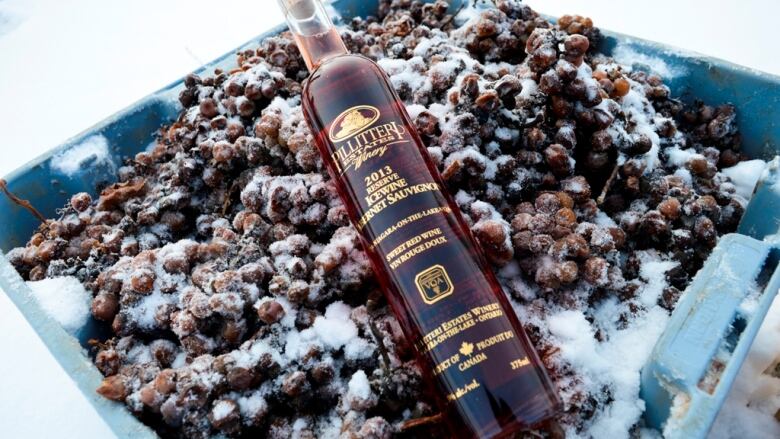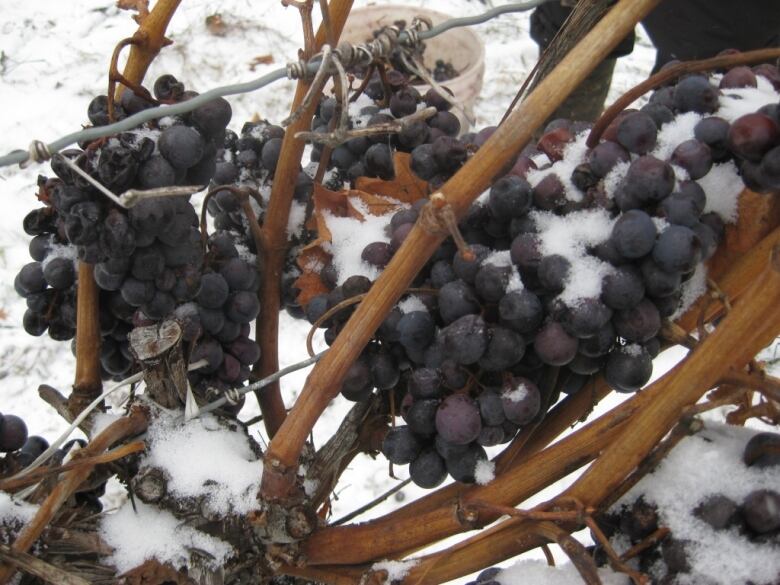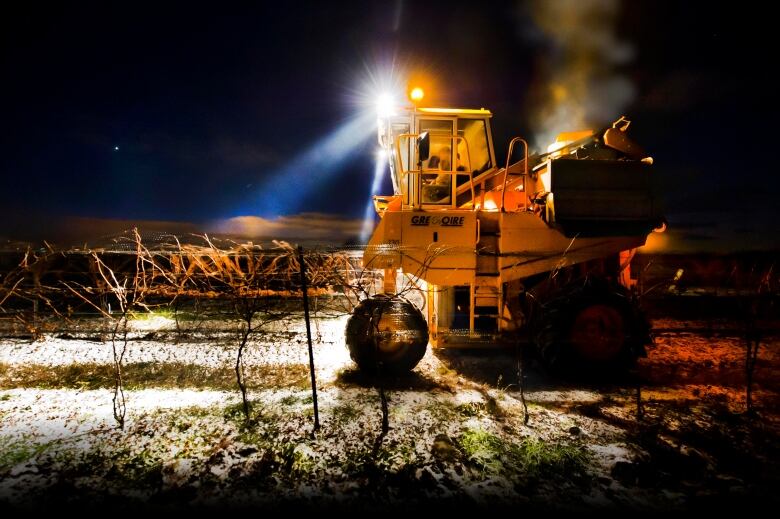It's a fruitful winter for Ontario icewine
Cold chilly temps have left icewine producers pleased, with many done their harvest weeks early.

Cold December weather made for an exceptional year for icewine in the Niagara wine region of southern Ontario.
A sustained cold snap meant wineries across the region were able to harvest frozen grapes weeks earlier than normal, in some cases even months, meeting Vintners Quality Alliance (VQA) regulations way ahead of schedule.
As one of the top producing regions foricewine in the world, it's a big deal.
A bountiful business
The province produces 80 to 95 per cent of icewine in the country, and "it would be safe to say that 60 per cent of all icewine produced in Canada is being produced in Niagara-on-the-lake," said Jamie Slingerland, director of viniculture at Pillitteri Estates Winery.

Pillitteri is one of the leading exporters of icewine in the world today. It'sgrowing larger still, as traditional European producers are struggling with warmer climates, and can no longer maintain the temperature required to harvest frozen grapes.
Said Slingerland, "It's such a difficult item to produce."
The VQArequires that icewine grapes must be harvested when "a sustained temperature of minus 8 degrees or lower is reached" according to their website. The grapes must be harvested and pressed in the same temperature air, making it a tricky process.
It's such a difficult item to produce.- Jamie Slingerland, Director of Vinoculture at Pillitteri Estates Winery
"There is a degree of complexity to it," said Slingerland, "there is a small window."
Early harvest
Average icewine harvest periods can range from December through to late February, and in extreme cases even March.
"In the last three or four years, we have harvested almost like clockwork the first week of January," said Slingerland.

"It's been a bonus for a lot of people. Getting the grapes off sooner, means you lose less grapes," he said.
Otherwineries across the region are alsoreportingan early and large harvest this year, including Fielding Estate Winery, D & S Vineyards, and HuebelGrapes Estates.
Pillitteri has dedicated fifty per cent of itsharvest to icewine, and estimate they produce about 20 per cent of icewine in the province. It makes for a lot of fruit, and can lead to shifts as long as 26 hours for a harvest.
An all star season
For Paul Pender, at Tawse Winery, this season has been an exceptional one for icewine harvesting.
"To get it done in December is amazing," he said. "To get it done before Christmas is a big bonus."

Tawse produces icewine on a smaller scale than Pillitteri, which uses machinery equipment to harvest its grapes. Pender and his team pick the grapes by hand, often at night to maintain the required temperature.
"This year it was so cold people were able to pick during the day," he said.
Thaw-proof
With an expected thaw over Christma,s some may be concerned, but in many cases wineries keep the grapes on the vine through multiple freeze-thaw cycles, to alter the flavour of the grape.

"That's part of the risk factor. It's a very high-risk crop, and that's why many wineries only do half of a percent of it. It's a novelty," he said.
With only one day of 8 Cand a big rain storm expected through Boxing Day, he says the grapes on the vine should be safe until the next cold snap. Which is important considering the reach of Canadian icewines.
"People don't realize that icewine garners for Canada as much attention in the wine world as hockey does for Canada in the sports world, if not more," he said.
"Canada produces the best icewine in the world, and now we produce the most in the world."












_(720p).jpg)


 OFFICIAL HD MUSIC VIDEO.jpg)
.jpg)



























































































